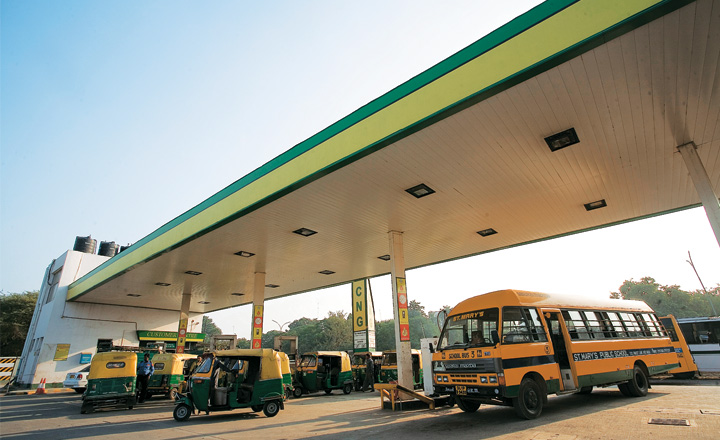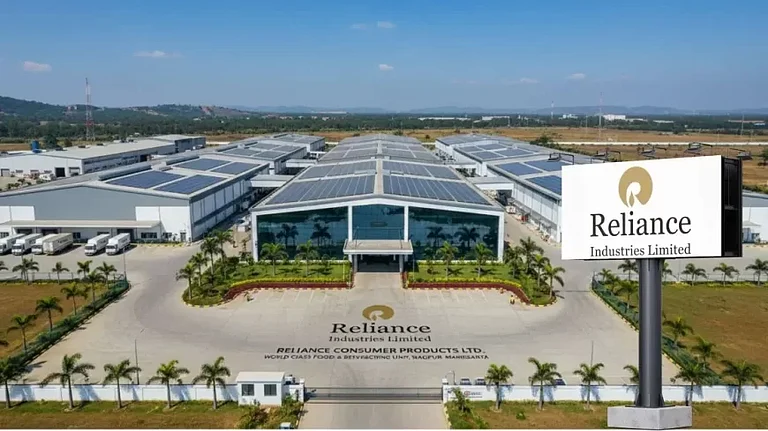In the last one month city gas distribution (CGD) companies such as Indraprastha Gas (IGL) and recently listed Mahanagar Gas (MGL) have seen a 14-26% spike in their stock price. “Unlike power and large industrial users where gas competes with coal or liquid fuel, city distribution enjoys the unique advantage of convenience, competitive cost and regulatory support. Our analysis of comparable metros such as Beijing suggests gas is likely to see more adoption at city level than at country level,” says Ritesh Gupta, analyst, Ambit Capital. MGL, IGL and Gujarat Gas not only are a monopoly in their respective markets but also have a formidable entry barrier. “A new player cannot enter till the five-year exclusivity period ends. But in that period the existing player will ideally juice out everything and there will be very little left for the new player to justify the huge investment and time,” says Harshvardhan Dole, analyst, IIFL.

More importantly, the three listed players are promoted by leading oil and gas companies, which back them with capital, knowhow and sourcing of fuel. IGL is promoted by GAIL and BPCL. MGL is jointly promoted by GAIL and Royal Dutch Shell plc and Gujarat Gas is owned by Gujarat State Petroleum Corporation. The distribution model allows partial pricing power and the business itself is less volatile because of stable demand from the automobile, household and industrial sector.
What is powering the story now is the shift of India’s fuel mix towards gas, which is cheap and relatively more environmental friendly. Analysts at Ambit Capital estimate that compared with fuel oil-emitting particulate matter, close to 18.05 grams per mmbtu (million British thermal units), natural gas emits mere 0.86 gram per mmbtu. That apart, the nitrogen oxides emission from fuel oil is at 166 per mmbtu, which is four times greater than emissions made by natural gas.
“Assured APM gas supplies, weak imported gas price, improving pipeline infrastructure, and stable regulatory framework should accelerate CGD penetration in India. We believe of PNGRB’s target to roll out CGD networks in 250-300 cities; at least 100-150 is achievable by 2020, that is a 2x increase over current operations,” says Dole.
As for PNG (piped gas) used in households, the government has set a target of increasing the user base from 3 million users in FY16 to 10 million users by FY21. Even if half of this growth is achieved, it will mean good volume growth for the existing players.
“Our calculations suggest that CNG used in automobiles is close to 30% cheaper than diesel and 50% cheaper than petrol. Similarly, PNG which is used by households is about 10% cheaper than LPG for consumers who get cylinders at the subsidised rates and about 27% for consumers who do not get subsidised LPG cylinders,” says Avishek Datta, analyst, Prabhudas Lilladher. (See: Cost advantage)
“After the correction in the international gas price, the domestic gas price which is linked to international benchmark prices have been reset at $2.8 per mmbtu for H2FY17 effective October 2016 as against $3.4 earlier,” points out Datta. Second, while India’s domestic gas production is still at about 90 mmscmd (million metric standard cubic metres per day), India continues to fuel its demand through cheap imports. Taking the advantage of lower gas prices, in May 2016, India’s LNG imports jumped more than 43% to 2,082 mmscm. Under the current framework, natural gas is first allocated to GAIL, which in turn supplies gas to domestic CGDs. Out of the domestic gas production, gas allocation to CGD is prioritised over the gas allocated to priority sectors such fertiliser and power.
Infrastructure bottlenecks are also easing due to the widening pipeline network. From less than 14,000 kms in 2014, India’s natural gas pipeline grid has reached about 165,00 kms currently, and is expected to reach 26,000-30,000 kms over the next five years.
The certainty of profitability of these companies improved after the Supreme Court clarification in 2015, removed the cap on marketing margins. No wonder both MGL and IGL have a return on equity of about 20%.
In the absence of competition, this is the best time for some of these players to sweat their assets and generate higher free cash-flow. “MGL generated Rs.200-250 crore of free cash flow annually in the last five years and paid 85% of the same as dividend. Capital intensity will start subsiding from FY19 as the network rollout is completed,” says Gupta.

Lining up for more
A natural outcome of growing demand and easing supply-side issues is growth in volume. While the revenue mix of three existing listed players is different, demand for domestic household piped gas, CNG used in automobile and industrial gas is expected to grow in the region of 8-10%.
Today, out of 70 authorised city gas distribution areas, only about half of them are operational. Moreover, 97% of this is around Mumbai, Delhi, Gujarat and Uttar Pradesh indicating that there is scope for penetration. And since there are entry barriers, the existing players will further benefit. (See: High growth potential)
MGL, which operates in Mumbai and neighbouring areas, comprising of 7 million vehicles and 3 million households, still has lot more leeway in terms of penetration as its customer base is a mere 0.4 million vehicles and 0.8 million households. To tap this opportunity, MGL is looking to open 83 new CNG stations in the city (188 currently) and laying another pipeline of about 700 km (currently 4,600 km) over the next three to four years.

Similarly IGL, which is the sole supplier of gas for automotive and PNG for commercial and domestic sector in the NCR, is expected to be the key beneficiary of growing demand from public transport and app-based taxis. Compared to MGL and Gujarat Gas, large part of IGL’s revenue comes from CNG because of the Supreme Court ruling that made it mandatory for all public transport in Delhi to use CNG. IGL has 27% market share compared to 17% in the case of MGL. While IGL’s markets are more mature, the company has bought a 50% stake each in Central UP Gas and Maharashtra Gas (Pune city gas), to ensure higher growth in the coming years. Both IGL and MGL have similar margins and return ratios, which is also the reason that both the companies trade at a similar (16.5X FY18 estimated earnings) valuation.
Unlike IGL and MGL, the market is waiting for a few structural changes in the case of Gujarat Gas. Gujarat Gas has comparatively larger market share at 38% with close to 1 million customers as against 0.6 million in the case of IGL and 0.82 million customers for MGL. Moreover its addressable market (Gujarat and others) is far bigger than the other two players, making it even more compelling.
That apart, compared to IGL and MGL, which derive over 80% of their revenue from CNG (automobile) and PNG (Household gas), Gujarat Gas depends on industrial and commercial gas for over 70% of its revenue. The company is now trying to change its revenue mix towards household gas and automobile where the margins are high and demand is predictable. As against MGL and IGL, which make an Ebidta per scm (standard cubic meter) of Rs.5.8-5.4, Gujarat Gas makes an Ebidta of Rs.3.6 per scm. MGL makes higher margins as it has a location advantage, being near to the source of production in Mumbai and its closer proximity to ports.
In case of Gujarat Gas, investors are looking at higher volume and margins in the coming years. “Gujarat Gas has refocused itself to grow. GGL (along with its sister concern Sabarmati Gas, which could potentially be merged into GGL) is licensed to distribute gas in almost all areas from outside Mumbai right up to Mehsana and up to Kutch on the eastern side in Gujarat. This would make GGL by far the largest CGD in India, in terms of area covered,” says Mehul Thanawala, director, JM Financial.
GGL’s current volume is 5.5 mmscmd as against Indraprastha Gas’ 4 mmscmd. GGL recently acquired five new circles including parts of Thane (industrial belt), Bhavnagar, Jamnagar, Kutch, Dadra and Nagar Haveli, which alone have the potential of adding volume to the tune of 4-5 mmscmd.
More than strong volume growth, investors are counting on consistency and longevity of growth. Not just MGL, but also for IGL and GGL, the new few years of growth will be capex led as they invest in infrastructure. Thankfully, some of their existing markets are maturing and throwing up cash. The long-term implication of this would be higher dividends in the years to come due to high internal cash generation. As the respective stocks have run up in anticipation, they now trade at 17-19x FY18 earnings.












 Just one email a week
Just one email a week